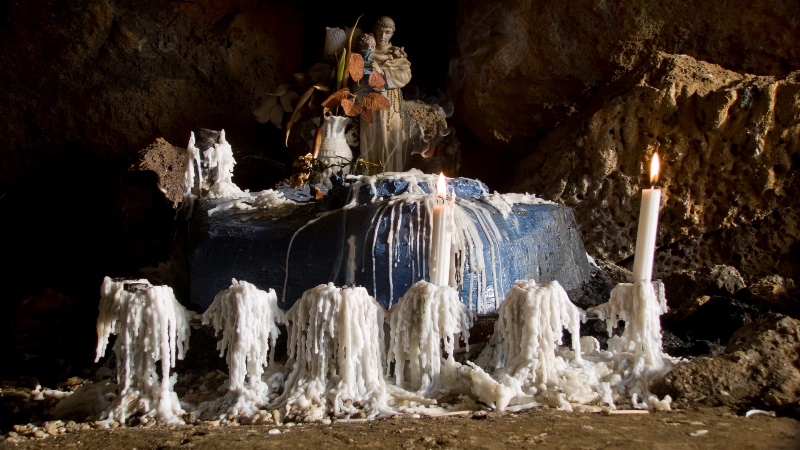- Artists
Shiraz Bayjoo, Ile de France, 2015, film still. Image courtesy the artist and Iniva.
Artist Shiraz Bayjoo as selected by Curator Teresa Cisneros, will be taking up his Open Studio & Residency with Iniva in mid-January 2015. This is an opportunity for the artist to return to London to show existing artworks which incorporate painting and archival material along with a draft of his new film Ile de France shot on location in Mauritius.
During his time of residency at Iniva, Shiraz will be working on his film completing it, along with having an open studio where members of the public are welcome to visit him.
The film Ile de France is a non-narrative film, focusing on objects, architecture and environments that act as historical images or documents revealing encounters between Mauritius and its colonial past.
Mauritius was originally an uninhabited island, and its people can be traced almost exclusively to the exploits of European colonists. During French then British colonial rule, Mauritius was pivotal to the slave trade as a strategic trading port, bringing Chinese and Arab merchants and trafficking slaves from India, East Africa and Madagascar.
The film commences with a scene of rugged coastlines giving way to grassy banks and eventually opening up to images of the rainforest; these time-based landscapes are suggestive of early colonists. We enter the ruins of the first Dutch settlement; the stonewall ruins are covered with graffiti, the inscribed names of the subsequent French colonists that eventually made Mauritius their home, and began the story of Ile de France. The ocean, however, remains constant, the real owner of these isles; there is a sense that this history is only a footnote in a greater story.
Several ruins are referenced within the film, from sugar plantations to the water mill of an early gunpowder factory, overrun with vegetation and the vines from Banyan trees. Here the tentacles of the industrial revolution reach out; we start to unravel the purpose of the colony, the ambition of empire.
‘Throughout its history of human habitation, Mauritius has been a profoundly cosmopolitan place (reminding us that globalisation has a long history)‘. Creating the Creole Island: Slavery in Eighteenth-Century Mauritius, Megan Vaughan, Duke 2005
The colonial architecture is further explored through the fading wooden houses of Port Louis. We are presented with the sounds and scenes of these merchant houses, moving along the textures of surfaces, aged in the tropics, with objects suggestive of the different lives that have possessed these spaces. Shadows, moving across the interiors, expose religious motifs and objects from Muslim and Indian traders that took possession of the former colonial mansions from the late 19th century onwards.
Mauritius, an important stopover in the eastern slave trade, also came to be known as the “Maroon republic” because of a large number of escaped slaves who lived on Le Morne Mountain. UNESCO World Heritage http://whc.unesco. org/en/list/1259
This film is a testament to the powers of globalisation and the impact of the colonial rule. Ile de France is part of the archive, where through contemporary society a more complex story of various cultural takeovers and integrations have occurred and are still very visible.
